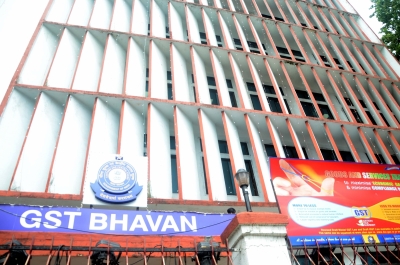GST Council mulls correction of inverted duty structure
By IANS | Published: June 12, 2020 06:56 PM2020-06-12T18:56:51+5:302020-06-12T19:10:45+5:30
The GST Council is considering the correction of the inverted duty structure as it has impacted revenue collection, along ...

GST Council mulls correction of inverted duty structure
The GST Council is considering the correction of the inverted duty structure as it has impacted revenue collection, along with resulting in higher outflow of refunds.
On Friday, the council, headed by Finance Minister Nirmala Sitharaman, discussed extensively on correcting the inverted duty structure for textiles, in specific.
Briefing the media, through video conference, Sitharaman said that there was unanimity among the members of the council regarding the need for correction of the structure, but the question was when it needs to be corrected.
"That's a festering issue for a very long time. Because of inversion, we get less tax revenue and end up giving a lot more of refunds, because of the accumulated ITCs (input tax credit). Therefore this issue of correcting inversions has been discussed in almost three to four GST council meetings. This time, we took it up," she said.
"There was discussion on when do we want to correct, meaning when do we want to rationalise the rates to correct the inversion related problems."
Although there were two more items other than textiles to be discussed regarding the inverted duty structure, they were not taken up on Friday as no clarity prevailed over when the correction should be made, she said.
'Inverted duty structure' refers to a situation where the rate of tax on inputs purchased is more than the rate of tax on outward supplies or the finished product.
A registered person may claim a refund of unutilised ITCs on account of the inverted duty structure at the end of any tax period where the credit has accumulated due to the rate of tax on inputs being higher than the rate of tax on the finished products or the output.
Correction of this structure has been a long standing demand of several manufacturing sectors.
( With inputs from IANS )
Open in app